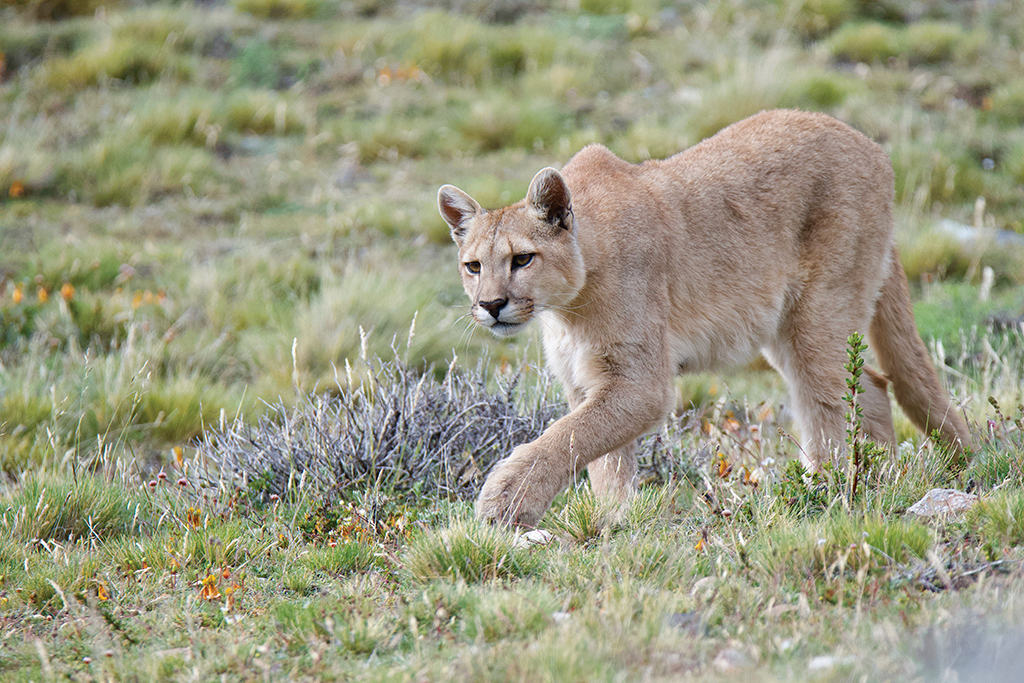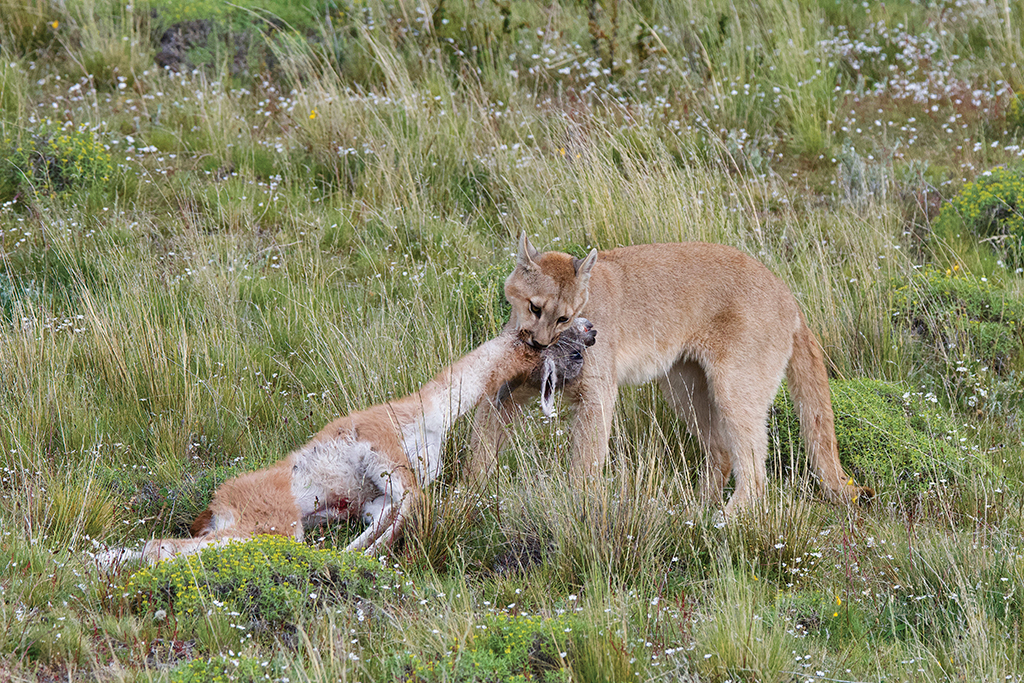Photographer Paul Gains relays his experience of tracking pumas in Patagonia
Photojournalist Paul Gains heads from his native Canada to the wilds of Patagonia on the hunt for the elusive puma

Patagonia had beckoned me for some time and the opportunity to see pumas in the wild had slowly become an overbearing obsession. Yes, ‘puma concolor’ reside in Canada too – they are called cougars – but in the sparsely populated areas of southern Chile, where there are no grizzly bears or wolves to compete with, they are certainly the apex predator.
So in December I flew to Punta Arenas, the southernmost city in Chile, and embarked on my mission. The trip yielded pleasing images of pumas and some of the species they share this harsh but beautiful landscape with, including Andean condors, Patagonian grey foxes and guanacos. It was another step in what I see as my evolution.
From sports to wildlife
Journalism has changed dramatically over the 30-plus years I have been involved, and whereas I was once almost exclusively a sports writer – I have covered five summer Olympic Games – in the past decade I have discovered a way to explore my passion for wildlife conservation.
Following the 2016 Rio Olympics – where I worked for CBC Television – I couldn’t wait to get out of the city and into the Brazilian Pantanal. There I photographed jaguars, caimans and giant river otters along the Cuiabá River in a place called Porto Jofre.
A trip across Ethiopia’s Simien mountains in 2017 provided memorable experiences with several endangered and threatened species: the walia ibex, Ethiopian wolf and lammergeier. Along with images of Alaskan brown bears, bald eagles, whales and snowy owls, I’m slowly gathering images for a book I’d like to publish in the near future.
On the trail again
I was of no false illusion that tracking pumas in Patagonia would be physically easy and, given the fact I became a grandfather in October, I figured I had better do this while I’m still able. It helped that The Herald newspaper in Glasgow commissioned a piece, and a Canadian lifestyle magazine also expressed interest in a feature.
Rex Bryngelson, owner of Patagonia Photo, took care of everything on the ground, securing five days’ accommodation and meals at a private ranch (Estancia Laguna Amarga), just outside Torres Del Paine national park. Most importantly, he also hired perhaps the best puma tracker in Chilean Patagonia – Roberto Donas. Each morning the three of us loaded our gear into Roberto’s all-wheel-drive Mitsubishi at 4.30am and we set out.
The best camera deals, reviews, product advice, and unmissable photography news, direct to your inbox!
I have been a Nikon shooter since 2012. The Nikon D500 is my go-to camera, as it’s great in low light and shoots a rapid 10fps. December in Patagonia is the start of summer, with about 17 hours of daylight, and I needed a camera like the D500.
These days I also travel with the Nikon D7000. For wildlife I have been using the Tamron 150-600mm on the D500. It’s light enough to hand-hold, which is a consideration when hiking great distances in the Andes mountains. I also like being able to zoom out when wildlife gets closer than expected. I mounted a Tamron 70-300mm on the D7000 for landscapes, but also carried the Nikon 17-55mm.
Every session brought successful puma encounters. We spent one day with a mother puma and her four cubs, and were blessed when two of the cubs came to us for protection as a large and dominant adult female threatened their mother.
The absolute highlight, though, was witnessing a hunt on the last evening. Through his binoculars, Roberto had spotted a young adult puma on a ridge. We hiked about 3km up and around her position, so as not to spook her, and then watched as she lay in wait. A herd of guanacos slowly moved uphill towards her. I was in perfect position when she struck.
Besides publishing photos and selling the occasional print I enjoy presenting my photos to audiences of university and high school students, in hope that my enthusiasm is an effective tool in promoting wildlife conservation.
See more Paul’s work
Read more:
Nikon D850 review
Best Nikon cameras
Best Nikon lenses
Best Nikon telephoto lenses
Best camera for wildlife
N-Photo: The Nikon Magazine is a monthly publication that's entirely dedicated to Nikon users. For the best news, reviews, projects and more, subscribe to N-Photo today!

Prior to joining digitalcameraworld.com as Guides Editor, Adam was the editor of N-Photo: The Nikon Magazine for seven years, and as such is one of Digital Camera World's leading experts when it comes to all things Nikon-related.
Whether it’s reviews and hands-on tests of the latest Nikon cameras and lenses, sharing his skills using filters, tripods, lighting, L brackets and other photography equipment, or trading tips and techniques on shooting landscapes, wildlife and almost any genre of photography, Adam is always on hand to provide his insights.
Prior to his tenure on N-Photo, Adam was also a veteran of publications such as PhotoPlus: The Canon Magazine, so his wealth of photographic knowledge isn’t solely limited to the Big N.




